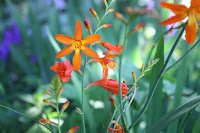Pollinators and the Native Plants You Should Grow for Them
The Kerr Center for Sustainable Agriculture in Poteau OK, has provided an online library for us to learn about which native plants are best for providing nectar and caterpillar food for our native pollinators. Here's a link that will take you directly to their resources and other helpful information. http://kerrcenter.com/conservation/native-plants-pollinators/native-plant-pollinator-publications/ If that interests you and you want more, go to their main site and look at the hundreds of free resources they offer to the public. http://kerrcenter.com/ We have taken a couple of their workshops and found them to be worthwhile for our gardening needs.


